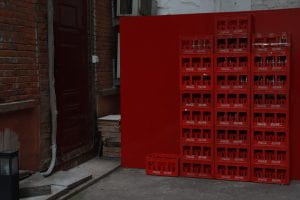





This portrait explores profound themes of duality, isolation, and mental well-being. It hints at the complexity of human experience by juxtaposing laughter and sadness within one symbolic image. The teardrop and hat represent the coexistence of apparent enjoyment and unseen struggle – reflecting how a single person can encompass happiness and heartache simultaneously. Through the motif of a lonely clown tear, the work touches on the anguish that can exist even when surrounded by others yet without true connection. It suggests how vocations centered around amusing the masses may inherently isolate those providing entertainment from sharing their authentic selves. Most significantly, the portrait raises awareness of depression – a condition that seldom discriminates and one whose sufferers often project joyfulness while internally experiencing darkness. In doing so, it promotes empathy for all people while giving visibility to invisible inner demons. Ultimately, this multi-layered representation of the “teardrop of clown” resonates profoundly through its exploration of duality, loneliness, mental health, and the full diversity within each human experience.
This edited portrait amplifies the dichotomy explored in the original concept through its manipulation of lighting and frame. The vignetting effect draws the viewer’s eye directly to the teardrop and hat, isolating the subject in shadowy despair. Darkening the background further underscores the sense of loneliness and melancholy implied by the symbolism. By exaggerating the contrast between light and dark, a mood of deep sadness infused with darkness is conveyed. The edits force the viewer to directly confront this clown’s private torment without distraction, making the psychological toll resonate even more strongly. This amplified sense of isolation and depression more profoundly suggests the inner turmoil that often hides behind smiling facades.By editing the lighting, cropping and compositions to evoke a heightened sense of gloom, this revised portrait powerfully underscores its underlying thesis about clowns suffering privately amid public performance. The exaggerated shadows and framing compel reflection on how inner anguish can lurk just out of view. It prompts consideration for the considerable emotional labor endured by entertainers and emphasizes the potential for pervasive yet discreet depression despite joking exteriors. In manipulating aesthetics to emphasize themes of loneliness and inner shadows, this portrait lays bare the darker aspects frequently shrouded yet integral to the clown experience. It brings to the forefront the otherwise obscured private pains that those who delight crowds may face.
































































































Recent Comments